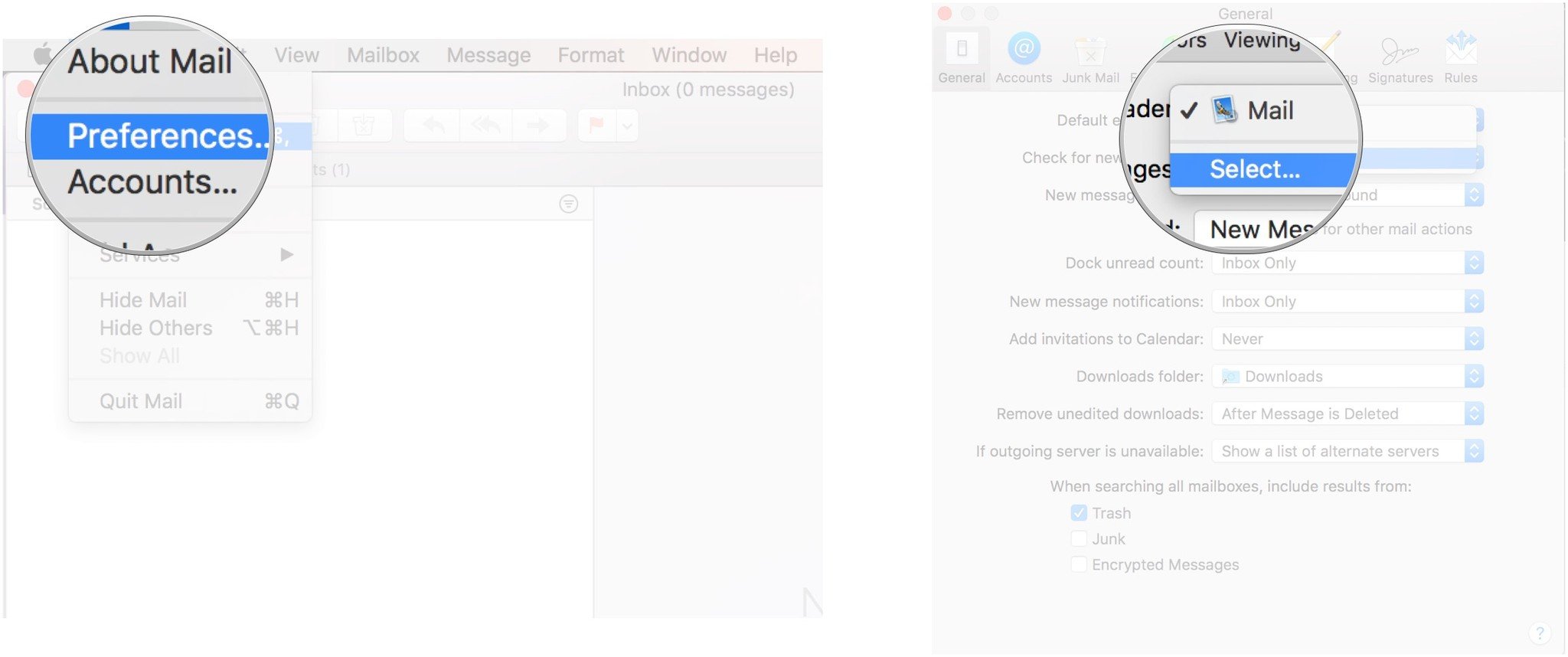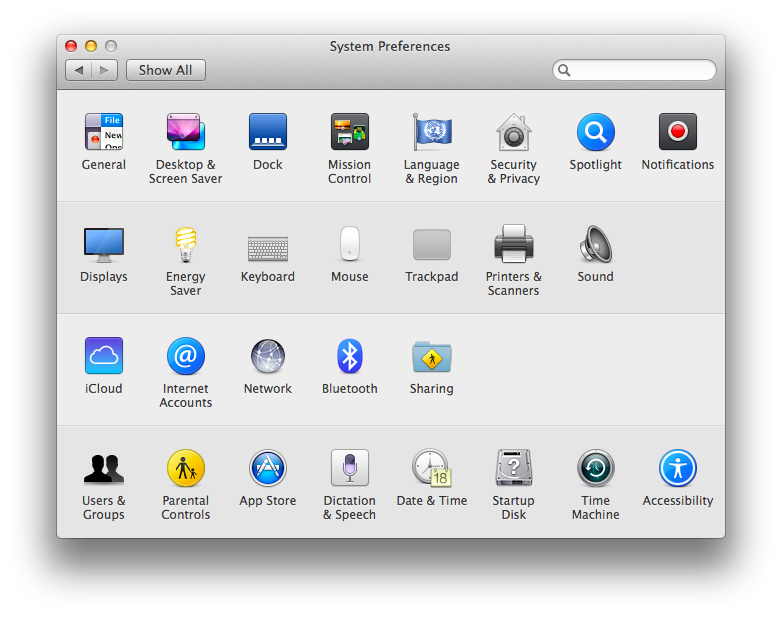Program Preference For Mac
- Program Preference For Macro Keys
- Program Preference For Mac To Draw
- Personal Preference Program
- Preferences In Mac Os X
Uninstalling software under Mac OS X is generally a straightforward procedure — just delete the program from the Applications folder. Few vendors offer uninstallers on the Mac, and generally they’re not necessary. Most programs don’t run background components or alter system settings files (like the Registry on Windows), and leaving old preferences and support files on the hard drive generally doesn’t do much harm.
Experienced Mac users know that many applications and utilities contain a preference pane component. It means that upon being installed on Apple computer, such apps create associated panes by adding icons to the System Preferences window. MacOS reserves the first few rows of the System Preferences window to place its own settings. The “Software Update” preference panel will now always be where system software updates to MacOS are shown, assuming any are available anyway. This is the same control panel that you can use to control things like automatic updates to Mac OS as well, so if you want to toggle any of those settings in MacOS 10.14 onward you can do so in the. Is there a program like paint for mac. How to Install Software from Unsigned Developers on a Mac. In this Article: Article Summary Allowing a Program Allowing All Software Community Q&A This wikiHow teaches you how to install software that isn't approved by Apple on your Mac. This procedure also works for other programs like iPhoto or iTunes, or whatever that stores a preference file (.plist) in the (hidden) User/Library folder, the procedure is the same, just sub out the program your having problems with.plist file instead of the System Preference.plist file below.
But if you are trying to remove an old or corrupt component, reinstall software to change a serial number, or just free up disk space, removing all components of the old application can be important. These components include the application itself, preferences and support items, and sometimes hidden files or kernel extensions. Anyone who’s had problems installing an Adobe CS application or removing Symantec AntiVirus will appreciate how hard it can be to fully remove old software.

Speed up your Mac with a few clicks
You can do it the easy way or the hard way. In this post you will find detailed information on how to speed up your Mac. You can do all these steps on your own. Or you can save yourself some time and some headaches by downloading a free trial of CleanMyMac. The software offers “all the tools to optimize your Mac, in one app.”
Applications
Be default, Mac OS X software is stored in the Applications folder on your hard drive. Most programs are single icons (iTunes, Firefox), while others contain one or more folders full of items (Adobe Acrobat, Microsoft Office). You can also occasionally find applications on the desktop, if dragged there during installation or moved from the Applications folder.

Drag the program’s icon or folder to the Trash to begin the uninstall process. If you are not the user who originally installed the software, or your are not an admin user on your Macintosh, you will need to enter an administrator’s name and password to continue.
Note: the icon for most programs is actually a bit of an illusion. What you’re seeing on the hard drive is an application package, a folder full of items including the executable program code and supporting files. When a package is labelled with the .app extension, it appears as a single, launchable icon in the Finder. If you’re curious whats inside, right-click (or control-click) on the icon and select Show Package Contents.
Preferences and Application Support Files
There are two locations on your hard drive, both named Library, where programs store their preferences and supporting files. The first Library is at the top level of your hard drive, the second is inside your Home Folder. Removing items from both these locations is necessary to completely uninstall software.
Start with the Top Level Library on your hard drive /Library. You are looking to remove any files or folders which contain the name of the program (Acrobat, Word) or the vendor (Adobe, Microsoft) in their names. Search the following locations:
- /Library
- /Library/Application Support
In these two locations you’re looking for non-Apple folders full of items: Adobe, Microsoft, etc.
- /Library/Preferences
Inside Preferences you may find single files, folders full of items – Adobe, Microsoft – along with .plist documents usually starting with com – com.Adobe.Acrobat.plist, com.microsoft.Word.plist
- /Library/LaunchAgents
- /Library/LaunchDaemons
- /Library/PreferencePanes
- /Library/StartupItems
Most software does not use LaunchAgents, Preference Panes or Startup Items, but some things do, particularly items which control system behavior or keep background processes running
Next, remove any similarly named items you find inside the User Library inside your Home Folder ~/Library in the same set of folders:
- ~/Library
- ~/Library/Application Support
- ~/Library/LaunchAgents
- ~/Library/Preferences
- ~/Library/PreferencePanes
- ~/Library/StartupItems
Program Preference For Macro Keys
For the vast majority of applications that’s all you need to remove. Empty the Trash to complete the process. If you get a message that an item is “in use and can’t be deleted” reboot the Mac, then try again.
Kernel Extensions and Hidden Files
Peazip Portable would be a fantastic zipping program even if it wasn't portable. It's especially potent if you need the same experience on multiple computers or have a do-it-all Flash drive. The fact that it is makes it a phenomenal option to choose for zipping and unzipping your files. This is a portable program, so it's made to live on a USB drive and work with multiple computers without needing installation. 
Program Preference For Mac To Draw
If you’ve deleted everything from the Applications and Library folders and some vestiges of old software still remain, you may be dealing with a kernel extension or hidden file. These items will not be obvious to find, doing a Google search about the components for your specific software situation is highly recommended.
Software that uses background processing – anti-virus and security programs, printers, device sync software – often install one or more kernel extensions. If your old installation of Symantec Utilities keeps telling you it’s out of date six years after you’ve deleted the program, chances are there’s still an old kernel extension loading up.
Warning: kernel extensions are necessary for correct operation of your system. Do not move or delete any items unless you have the ability to redo changes made by booting from a second Macintosh or drive and restoring changes made to the first hard drive.
Kernel extensions are located in /System/Library/Extensions and end with the extension .kext. Again you are looking for items with the name of the program or vendor in the name. For example, with old copies of troublesome Symantec software you might find SymEvent.kext and SymOSXKernelUtilities.kext lurking on your system.
Drag any probable items to the desktop first to make a copy, then move the original to the trash. Don’t empty the trash yet – reboot and see if the issue is fixed. If not, restore the item and try another.
Hidden files are items whose name starts with a period (.) They don’t display in the Finder by default. Programs sometimes use hidden files for authentication purposes, many are located in your home folder. You can use Terminal (inside Applications/Utilities) to list the contents of the directory in question and delete the offending item.
For example, the following set of commands will navigate to the home folder (~), list all contents, then delete a hidden file named .parallels_settings:
%> cd ~
%> ls -al
%> sudo rm .parallels_settings
Personal Preference Program
Using sudo to do the deletion will require you to enter an admin password when prompted.
Preferences In Mac Os X
—
Updated April 2014: added info about LaunchAgents and LaunchDaemons